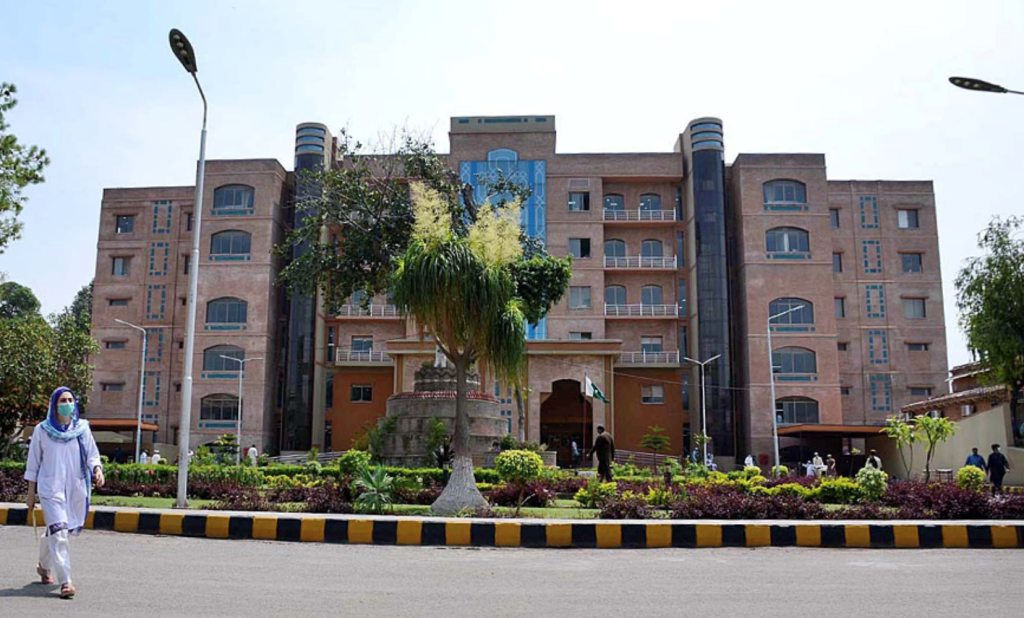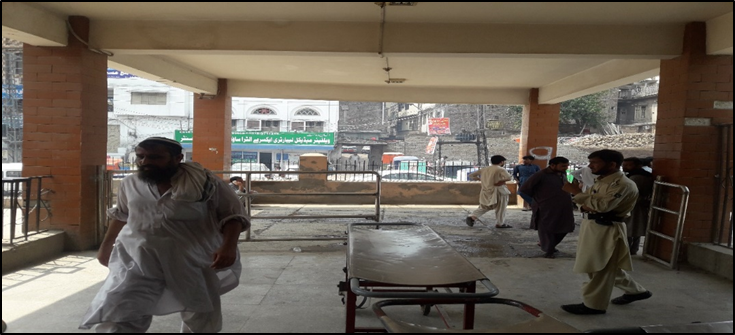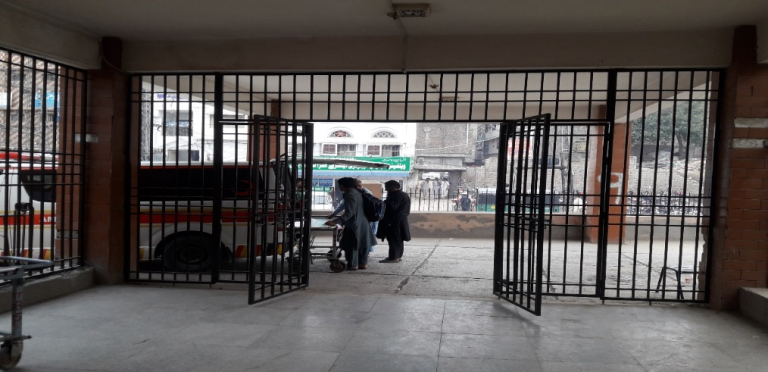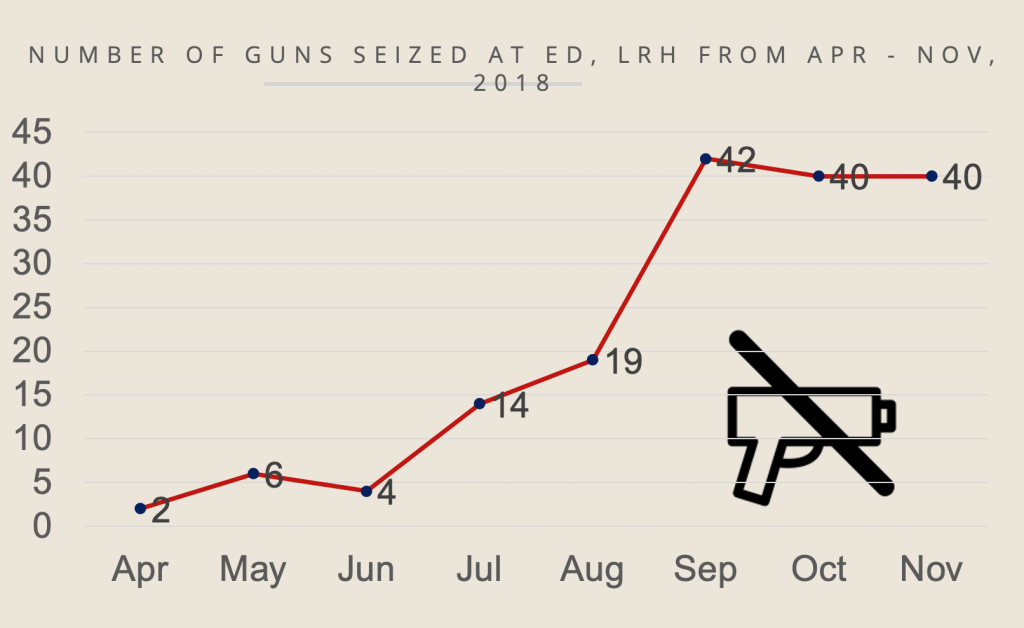the Lady Reading Hospital in Peshawar, Pakistan

PRACTICAL APPROACHES TO REDUCING VIOLENCE AND THE INFILTRATION OF WEAPONS IN THE LADY READING HOSPITAL IN PESHAWAR, PAKISTAN
Background
Established in 1927 it is the largest health care facility in Khyber Pakhtunkhawa Province. It has 1700 beds, 1350 doctors, 33 departments with one of the biggest trauma centres in Pakistan. The Emergency Department receives about 3000 to 4000 patients per day. It offers free medical treatment in emergencies.
It is located in a dense inner-city location and is adjacent to a military installation.
There is a culture of carrying weapons in this part of Pakistan and this has meant that there has been a history of carrying weapons into the hospital. This has had the following impacts on healthcare:
- There have been incidents involving violence against healthcare workers
- Incidences of patients being targeted in the facility resulting in injuries and deaths
- Hinderance in provision of health care due to disruption caused by violence
- Healthcare staff resorting to temporary suspension of services to protest violent events targeting health care and thus further impacting access to healthcare services
- Psychological consequences/staff feeling unsafe and worried about their safety
The Programme
In 2017 a joint programme was developed by the hospital and the HCiD programme to reduce violence against healthcare workers. A key part of the overall programme was to reduce the number of weapons entering the hospital.
This work included:
- A hospital security survey that identified key risks associated with the physical structure of the hospital
- Research on violence against health care workers in the hospital to determine the types of incidents and who committed them.
- “De-escalation & managing violence in health care settings” training took place to give staff the skills and expertise to reduce the number and severity of incidents.
- A media campaign that emphasised the impact of violence on healthcare and disseminated
- Improving security measures and SOPs within the hospital that helped to secure a stricter implementation of the “No Weapons Policy”


Gates were built at the main entrances and exits to ensure that searchers of weapons could take place effectively allowing a much stricter implementation of the “No Weapons” policy.
The gates also allowed the control of numbers entering the hospital which improved the ability of the hospital to deal with major emergencies when the hospital would normally be overwhelmed by patients seeking treatment.
Impact of the programme
The Impact of this intervention was that the number of guns seized at the entrances to the hospital went from two to forty within a six months period.

Recommendations:
It is not sufficient to develop a communication campaign to stop people bringing in weapons to healthcare facilities. You must ensure that there is a physical security barrier that is effectively enforcing the policy of people bringing in weapons to healthcare facilities.
It is important to explain why you are implementing the increased security policies and what benefits patients and staff are likely to gain from extra security measures.
It is critical that you train security staff so that they are fully aware of the no weapons policy relevant SOPs, periodic drills designated visiting hours and the one-attendant policy. By having security staff properly trained they will be able to deal with difficult situations sensitively but firmly with everyone entering the hospital with a weapon.
Improving the waiting areas including increased lighting, more seating and information will reduce frustration, anger and violence towards health care workers.